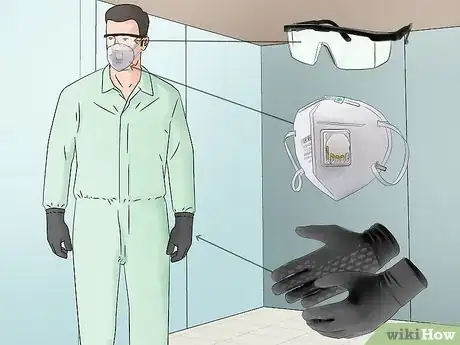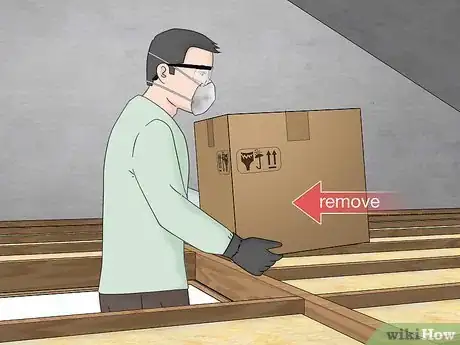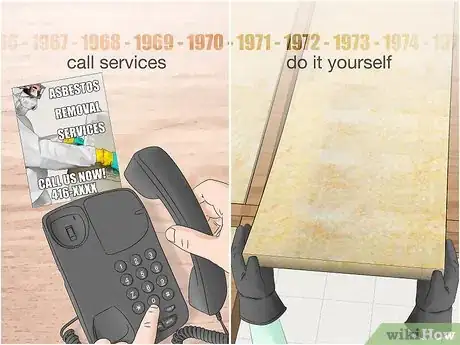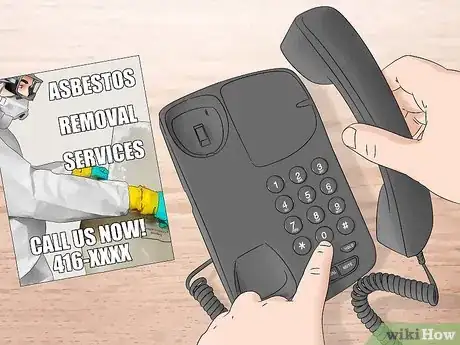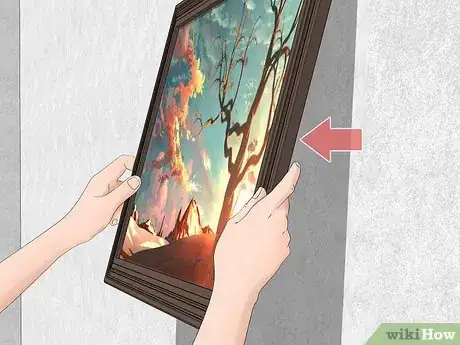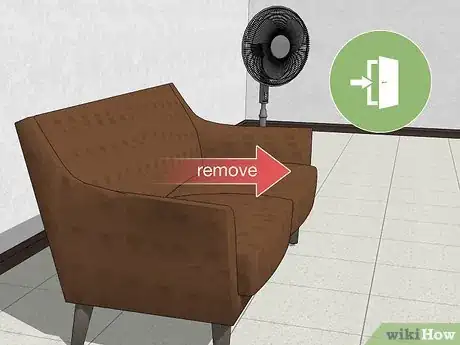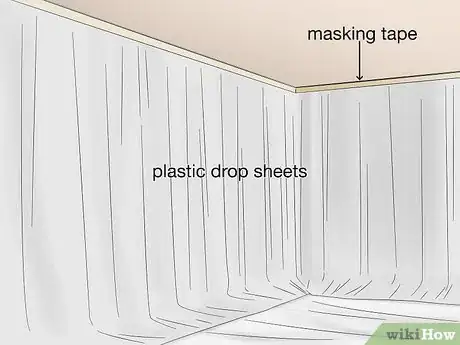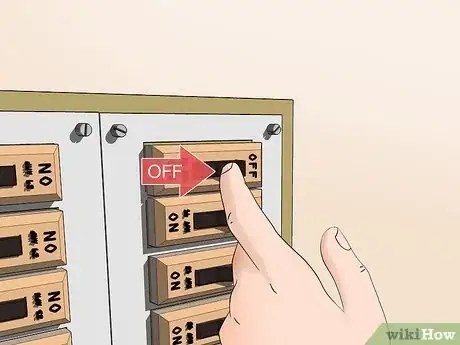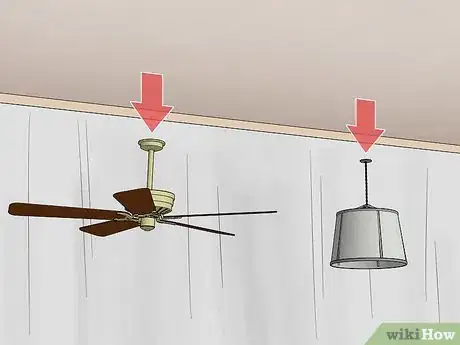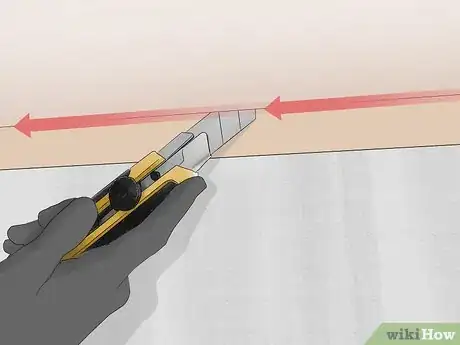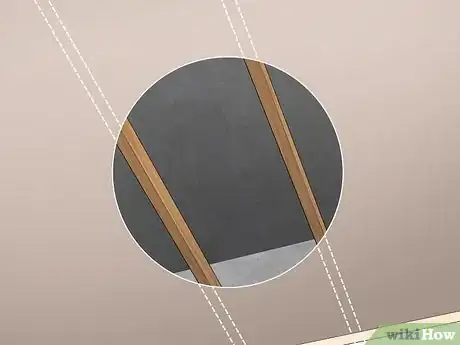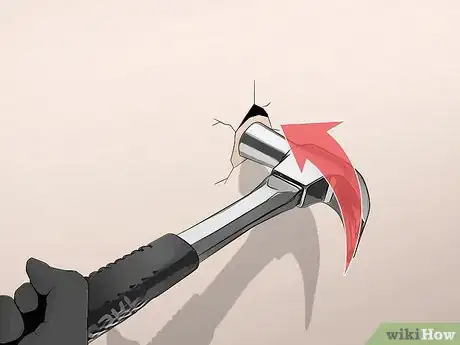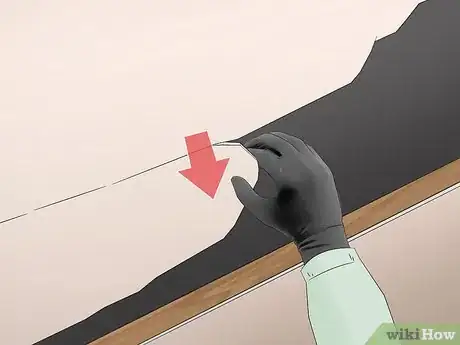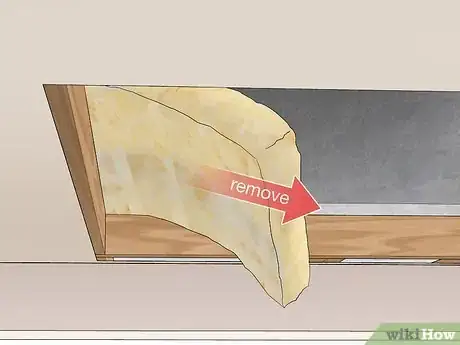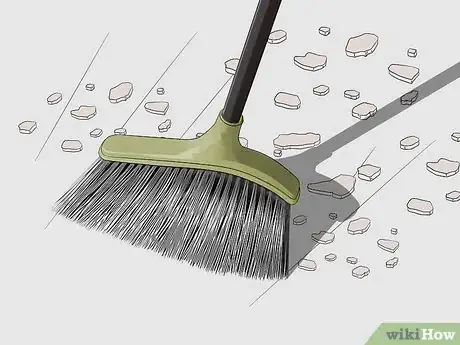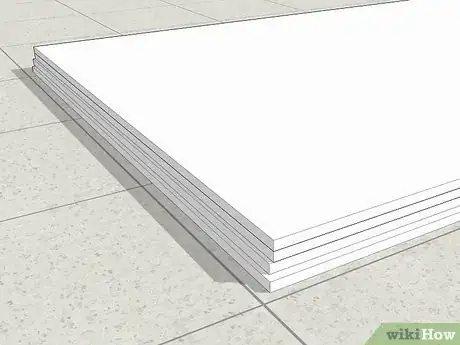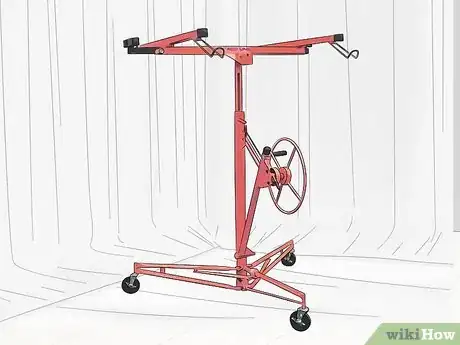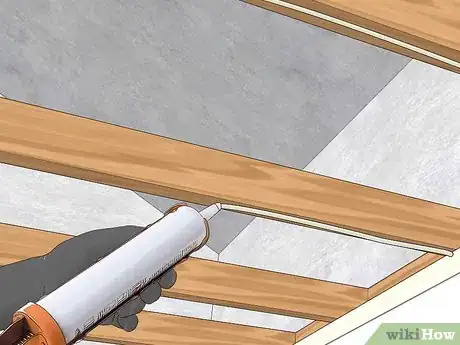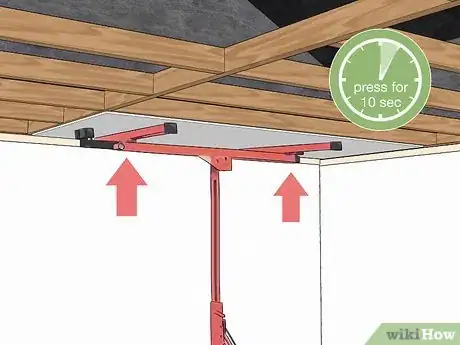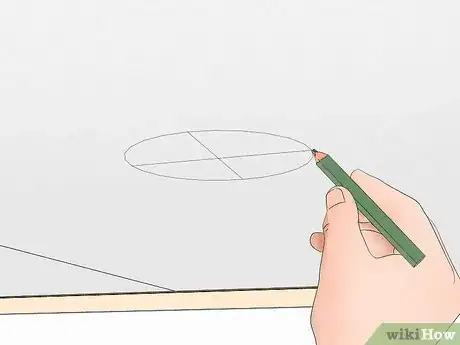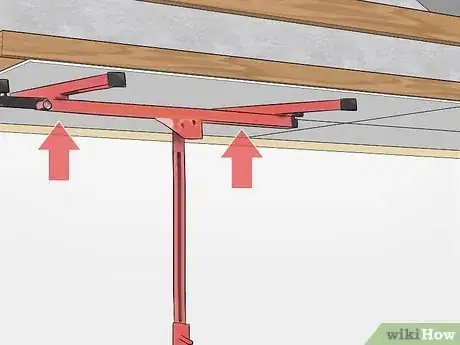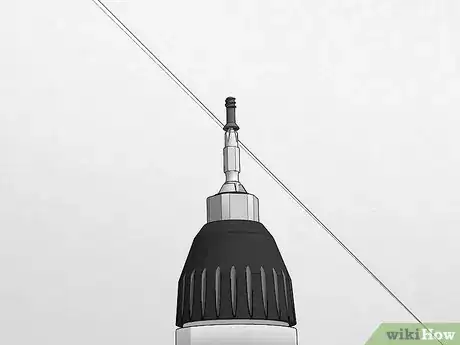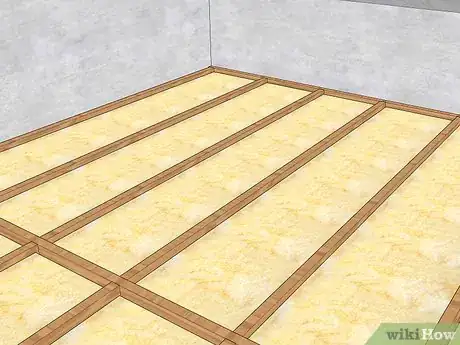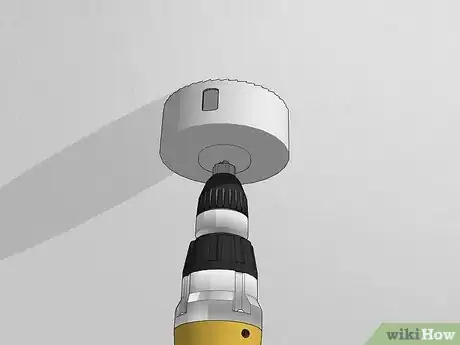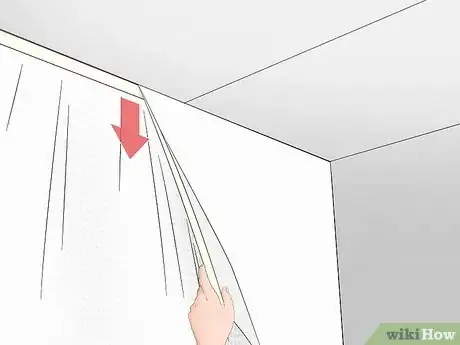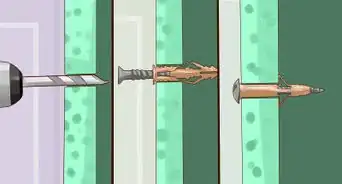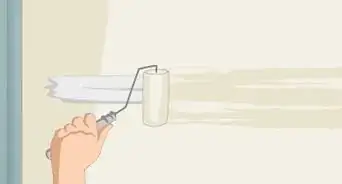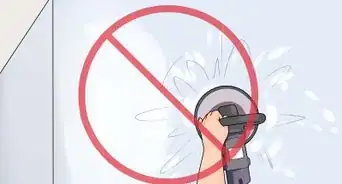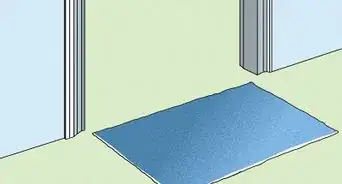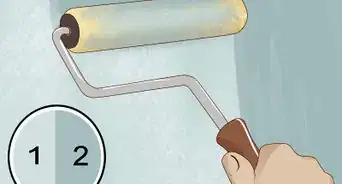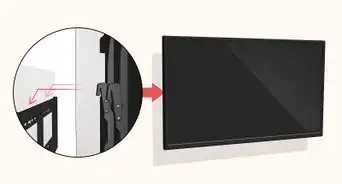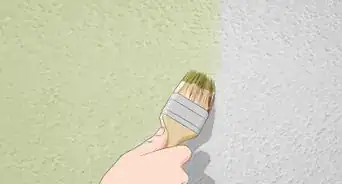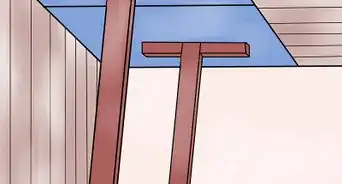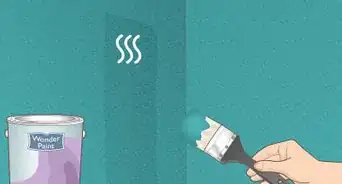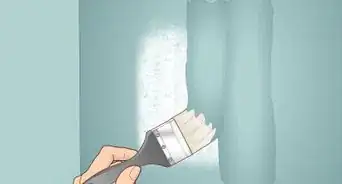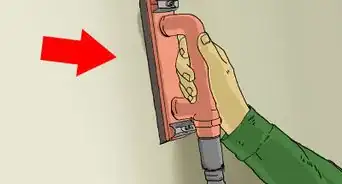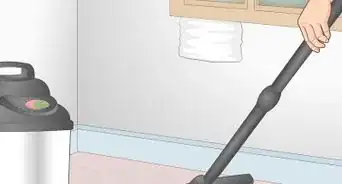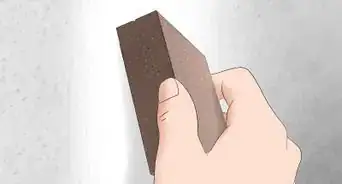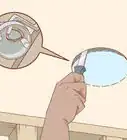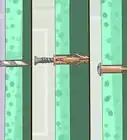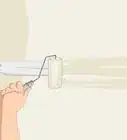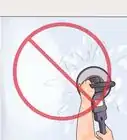This article was co-authored by Ryaan Tuttle. Ryaan Tuttle is a Home Improvement Specialist and the CEO of Best Handyman, Inc. in Boston, Massachusetts. With over 17 years of experience, he specializes in building home service businesses, focusing on creating scalable and efficient brands. With the help of his global team, the companies have achieved over 10+ million in sales and received recognition through magazine features, and enjoy partnerships with wikiHow and Jobber field service software. Boston Magazine and LocalBest.com have named Best Handyman Boston the Best Handyman in Boston. Ryaan holds Construction Supervisor and Home Improvement Contractor Licenses.
There are 7 references cited in this article, which can be found at the bottom of the page.
This article has been viewed 52,382 times.
Replacing your ceiling drywall will take a little bit of time and effort, but it isn’t difficult if you have the right tools and materials. Clear the room, walls, and attic, if there is one above the ceiling. Pull out the insulation and set it aside so you can replace it later. Then, remove any fixtures and take down the old ceiling drywall. Use drywall adhesive to hold the new ceiling drywall up so you can fasten it with screws. The job will be difficult to do on your own, so consider renting a drywall lift or asking a friend to help you.
Steps
Clearing the Area and Removing Insulation
-
1Put on gloves, safety glasses, and a face mask. Ceilings, attics, and drywall can be dusty, dirty, and contain fiberglass and other particles that can get into your skin and eyes and irritate your throat and lungs if you breathe it in. Before you start working, put on some thick work gloves, safety glasses, and a face mask so you’re protected.[1]
- You can find safety equipment at home improvement stores, at department stores, and online.
- Make sure the glasses fit snugly over your eyes so dust can’t get in on the sides.
- You may want to wear a thick pair of jeans and a long-sleeved shirt to add additional protection to your skin.
-
2Take out any items stored in the attic, if necessary. If the ceiling you’re replacing has an attic above it, access it and look for any items that may be stored in there. Old suitcases, clothes, and other items that you have stored in your attic need to be taken out before you start working.[2]
- Speed up the process by having somebody stand below the access point so you can hand them items that you remove.
Advertisement -
3Pull out the insulation yourself if your home was built after 1970. Look for insulation in the attic above the room. If you’re sure the insulation doesn’t contain asbestos, pull out all of the insulation by pulling it up and carrying it out of the room. You can set it aside to replace it whenever you install your new ceiling drywall.[3]
- If your attic has flooring that is covering the insulation, wait until you remove the old ceiling drywall to remove the insulation from below rather than removing the flooring.
- If the ceiling does not have an attic above it, wait until you remove the old ceiling drywall to take out the insulation.
-
4Contact an asbestos removal specialist if your home was built before 1970. Older homes often used insulation that contains asbestos, which can cause serious respiratory disease if it is inhaled. If your home was built before 1970, do not attempt to remove or disturb the insulation above your ceiling to avoid exposure to asbestos. Contact a professional to come test your insulation to make sure it’s safe for you to handle.[4]
- Search online for asbestos removal professionals in your area.
Warning: If you’re unsure of whether or not your insulation contains asbestos, contact a professional asbestos disposal company to come inspect and remove your insulation.
-
5Take down anything on the walls in the room. Remove any picture frames and decor from the walls and set them in another room so they’re out of the way. Use a screwdriver to remove the screws and disconnect the electrical cables to remove any light fixtures installed in the walls so they aren’t damaged when you remove the ceiling drywall.[5]
-
6Clear out any furniture, rugs, or other items from the room. Take out any chairs, couches, electronics, tables, rugs, or anything else that may be in the room so they aren’t damaged or in your way when you’re working. Move them out of the room entirely so you can work unimpeded.[6]
- Place the items in a nearby room so they aren’t far and you can easily place them back into the room when you’re finished.
Removing the Fixtures and Existing Drywall
-
1Cover the floor and walls with plastic drop sheets.[7] Use masking tape to attach plastic drop sheets to the edges of the walls where they meet the ceiling. Allow the plastic sheeting to drape over the walls and cover the floor of the room so they aren’t damaged by the falling drywall, as well as all of the dust, dirt, and other debris from the ceiling.[8]
- Don’t use canvas drop cloths or any moisture that gets on them will soak through.
- You can also use plastic tarps to cover your walls and floor.
-
2Shut off power to the room by flipping the breaker in the breaker box. Find your breaker box and check the diagram on the inside of the panel door to identify the switch that controls power to the room where you’re replacing the ceiling drywall. Flip the switch to shut off power to the room so you can work without the risk of being shocked.[9]
- Set up lamps or a spotlight so you can see while you work, if necessary.
-
3Unscrew and take down any fixtures installed in the ceiling. Remove any vents, light fixtures, ceiling fans, or any other fixtures that are in your ceiling. Use a screwdriver to take out any screws that are attaching them, disconnect any electrical wires connected to them, and carefully pull them out of the ceiling.[10]
- Have another person help you hold the fixture so you can disconnect the wires more easily.
- Place the fixtures in another room so they’re safe and out of the way.
Tip: Keep any screws or fasteners you remove in a plastic bag next to the fixture so don’t lose them.
-
4Score the corners of the drywall and ceiling with a utility knife. Take a utility knife and cut along the edge where your ceiling meets your wall to minimize damage to your wall. Press the edge of the knife into the edge of the wall and cut along the entire length of it.[11]
- Scoring the corners will help keep the paint from peeling off of your wall when you remove the ceiling drywall.
-
5Locate 2 ceiling joists with a stud finder. Ceiling joists frame and support your ceiling much like studs in your wall. Locate a ceiling joist so you can make sure you don’t damage it when you start removing the drywall. Then, locate the joist adjacent to it so you can work between them.[12]
- Mark the location with a marker or pencil.
-
6Bash a small hole between 2 joists with a hammer. Take a hammer and strike the ceiling drywall in the area between 2 joists. Make a hole large enough to fit both of your hands into it.[13]
- Make sure you’re wearing your gloves, safety glasses, and breathing mask so you don’t get dust or fiberglass in your skin, eyes, or lungs.
-
7Pull all of the drywall down by hand. Reach into the hole you smashed in the ceiling drywall, grip the edges of the hole, and start pulling down the drywall from the ceiling. Make sure the drywall doesn’t fall on you or someone helping you and allow it to fall to the floor so you can clean it up later. Continue pulling the drywall down until it’s all removed from the ceiling.[14]
- Have somebody help you by picking up the drywall and throwing it away as you pull it down so the mess doesn’t accumulate.
-
8Remove the insulation if you weren't able to access it before. If your insulation is covered by attic flooring or if you don't have an attic, the insulation will now be exposed. Carefully remove all of it from the ceiling, if it hasn't already fallen down. You can keep it to replace it or buy new insulation and put it on top of each drywall board as you install the drywall.
-
9Clean up any drywall, dust, and debris from the room. There will be lots of dust and debris on the ground after you finish removing all of the old ceiling drywall. Use a broom to sweep it all into a pile in the middle of the room, then use a dustpan to collect and dispose of it.[15]
- Keep the plastic drop sheets in place so you can install the new drywall without making a mess on your floor or walls.
Installing the New Drywall
-
1Use ceiling-grade gypsum board to replace your ceiling drywall. Gypsum board is much lighter than the standard wallboard, which makes it safer to use for ceilings. When you’re choosing your new drywall, look for ceiling-grade gypsum board for the best and safest option to replace the drywall on your ceiling.[16]
- The drywall you use on your ceiling needs to be lighter so there’s less risk of it collapsing.
- You can find ceiling-grade gypsum board at your local home improvement store.
Tip: To calculate how much drywall you’ll need, multiply the length and width of your ceiling to find the total surface area you need to cover. Gypsum board drywall comes in sheets of 4 by 8 feet (1.2 by 2.4 m), which equates to 32 square feet (3.0 m2). Purchase enough to cover the entire area of your ceiling.
-
2Rent a drywall lift or have somebody help you install the new drywall. The large size of the drywall makes it unwieldy and difficult to install by yourself. If you can, have a friend help you install it so they can assist you by holding up the drywall. You can also rent a drywall lift, which is a metal device that allows you to place the drywall on rails so you can move it into place and turn a wheel to raise it to the ceiling.[17] [18]
- You can rent drywall lifts for the day from a local home improvement store.
-
3Apply drywall adhesive to the joists. Start in 1 corner of the ceiling where you can use 1 full sheet, and squeeze the adhesive out of the tube and onto the edge of the joist facing down toward the floor. Apply an even layer to all of the joists that you will connect the first sheet to.[19]
- You can find drywall adhesive at hardware stores, at home improvement stores, and online.
-
4Raise the drywall and press it against the joists. Place the sheet of drywall on the drywall lift and turn the wheel to raise it into place or have someone help you raise the drywall up so you can connect it to the joists. Press the drywall against the joists and hold it for about 10 seconds so the adhesive can bond to it.[20]
- Gently release pressure from the drywall so the adhesive can hold it in place.
-
5Mark the locations of fixtures and ceiling joists on the drywall. Once you press the drywall to the joists, mark where you’ll need to cut holes to reinstall the fixtures and mark the location of the joists so you can drill fastener screws into them. Make a light marking so they aren’t visible when you’re finished.[21]
- Use a pencil to lightly mark the location of joists and where you’ll need to cut holes.
-
6Continue to apply adhesive and connect drywall until the ceiling is covered. Apply adhesive to the joists adjacent to drywall you just installed. Then, press another sheet of drywall to the adhesive to hold it in place. The adhesive will be dry after about 15 minutes, so work to apply it and connect the new drywall as quickly as you can so the ceiling is complete.[22]
- Use your utility knife to trim the drywall if it needs to be fitted into edges or corners.
Tip: If you can't access the ceiling from above to replace the insulation, add insulation on top of each gypsum board as you go.
-
7Drill 1.25 in (3.2 cm) screws into the drywall and ceiling joists. Use the markings you made to identify the ceiling joists and drive screws into them. Use a power drill to drive the screws through the drywall and into the ceiling joist. Space the screws about 12 inches (30 cm) apart along the joists for the best support.[23]
- If you don’t have a power drill, you can use 1.25 in (3.2 cm) long nails and drive them into the joists with a hammer.
-
8Replace the insulation in the attic if you have one. If there’s an attic above the ceiling, access it and place the insulation back where you removed it from. If there isn’t an attic above the ceiling, make sure you replace the insulation above the sections of drywall as you install them.[24]
-
9Cut out the slots for the fixtures and reinstall them. Use your utility knife to cut an opening in the ceiling drywall where you marked the locations of the fixtures. Widen and adjust the opening as needed to fit the vent, fan, or fixture into place. Connect the fixture to the electrical cord and then screw them into the new ceiling drywall so they’re secure.[25]
- Have someone help you hold up heavier objects such as ceiling fans or large lights.
- Turn on the fixture to make sure it works.
-
10Take down the plastic drop sheets and replace the furniture and decor. Gently peel off the masking tape so you don’t damage the paint and remove all of the plastic drop sheets from the room. Put the furniture, rugs, picture frames, and anything else that you cleared out of the room before.[26]
Expert Q&A
Did you know you can get expert answers for this article?
Unlock expert answers by supporting wikiHow
-
QuestionHow can I hang ceiling drywall by myself?
 Ryaan TuttleRyaan Tuttle is a Home Improvement Specialist and the CEO of Best Handyman, Inc. in Boston, Massachusetts. With over 17 years of experience, he specializes in building home service businesses, focusing on creating scalable and efficient brands. With the help of his global team, the companies have achieved over 10+ million in sales and received recognition through magazine features, and enjoy partnerships with wikiHow and Jobber field service software. Boston Magazine and LocalBest.com have named Best Handyman Boston the Best Handyman in Boston. Ryaan holds Construction Supervisor and Home Improvement Contractor Licenses.
Ryaan TuttleRyaan Tuttle is a Home Improvement Specialist and the CEO of Best Handyman, Inc. in Boston, Massachusetts. With over 17 years of experience, he specializes in building home service businesses, focusing on creating scalable and efficient brands. With the help of his global team, the companies have achieved over 10+ million in sales and received recognition through magazine features, and enjoy partnerships with wikiHow and Jobber field service software. Boston Magazine and LocalBest.com have named Best Handyman Boston the Best Handyman in Boston. Ryaan holds Construction Supervisor and Home Improvement Contractor Licenses.
Home Improvement Specialist
-
QuestionDoes it matter where I'm cutting away the old drywall?
 Ryaan TuttleRyaan Tuttle is a Home Improvement Specialist and the CEO of Best Handyman, Inc. in Boston, Massachusetts. With over 17 years of experience, he specializes in building home service businesses, focusing on creating scalable and efficient brands. With the help of his global team, the companies have achieved over 10+ million in sales and received recognition through magazine features, and enjoy partnerships with wikiHow and Jobber field service software. Boston Magazine and LocalBest.com have named Best Handyman Boston the Best Handyman in Boston. Ryaan holds Construction Supervisor and Home Improvement Contractor Licenses.
Ryaan TuttleRyaan Tuttle is a Home Improvement Specialist and the CEO of Best Handyman, Inc. in Boston, Massachusetts. With over 17 years of experience, he specializes in building home service businesses, focusing on creating scalable and efficient brands. With the help of his global team, the companies have achieved over 10+ million in sales and received recognition through magazine features, and enjoy partnerships with wikiHow and Jobber field service software. Boston Magazine and LocalBest.com have named Best Handyman Boston the Best Handyman in Boston. Ryaan holds Construction Supervisor and Home Improvement Contractor Licenses.
Home Improvement Specialist
Things You’ll Need
- Safety glasses, work gloves, and a breathing mask
- Plastic drop sheets
- Hammer
- Stud finder
- Screwdriver
- Ceiling-grade gypsum board
- Power drill
- 1.25 in (3.2 cm) screws
- Marker or pencil
- Utility knife
- Masking tape
- A drywall lift or someone to help you
- Broom and dustpan
Warning
- If your home was built before 1970, or you’re unsure if your insulation has asbestos, contact a professional asbestos disposal company to inspect your insulation before you replace your ceiling drywall.
References
- ↑ https://www.bhg.com/home-improvement/walls/how-to-remove-drywall/
- ↑ https://www.thestreet.com/how-to/how-to-remove-popcorn-ceiling-14656178
- ↑ https://www.thisoldhouse.com/ideas/3-ways-to-deal-popcorn-ceiling
- ↑ https://www.thisoldhouse.com/ideas/3-ways-to-deal-popcorn-ceiling
- ↑ https://www.thestreet.com/how-to/how-to-remove-popcorn-ceiling-14656178
- ↑ https://www.thestreet.com/how-to/how-to-remove-popcorn-ceiling-14656178
- ↑ Ryaan Tuttle. Home Improvement Specialist. Expert Interview. 13 January 2021.
- ↑ https://www.thestreet.com/how-to/how-to-remove-popcorn-ceiling-14656178
- ↑ https://www.bhg.com/home-improvement/walls/how-to-remove-drywall/
- ↑ https://www.thestreet.com/how-to/how-to-remove-popcorn-ceiling-14656178
- ↑ https://www.homedit.com/replace-ceiling-sheetrock/
- ↑ https://www.finehomebuilding.com/2017/10/12/drywall-removal-made-easy
- ↑ https://www.finehomebuilding.com/2017/10/12/drywall-removal-made-easy
- ↑ https://www.finehomebuilding.com/2017/10/12/drywall-removal-made-easy
- ↑ https://www.finehomebuilding.com/2017/10/12/drywall-removal-made-easy
- ↑ https://www.thisoldhouse.com/ideas/3-ways-to-deal-popcorn-ceiling
- ↑ https://www.thisoldhouse.com/ideas/3-ways-to-deal-popcorn-ceiling
- ↑ Ryaan Tuttle. Home Improvement Specialist. Expert Interview. 13 January 2021.
- ↑ https://www.proconstructionguide.com/how-to-install-a-drywall-ceiling/
- ↑ https://www.proconstructionguide.com/how-to-install-a-drywall-ceiling/
- ↑ https://www.proconstructionguide.com/how-to-install-a-drywall-ceiling/
- ↑ https://www.proconstructionguide.com/how-to-install-a-drywall-ceiling/
- ↑ https://www.proconstructionguide.com/how-to-install-a-drywall-ceiling/
- ↑ https://www.thisoldhouse.com/ideas/3-ways-to-deal-popcorn-ceiling
- ↑ https://www.proconstructionguide.com/how-to-install-a-drywall-ceiling/
- ↑ https://www.thisoldhouse.com/ideas/3-ways-to-deal-popcorn-ceiling
